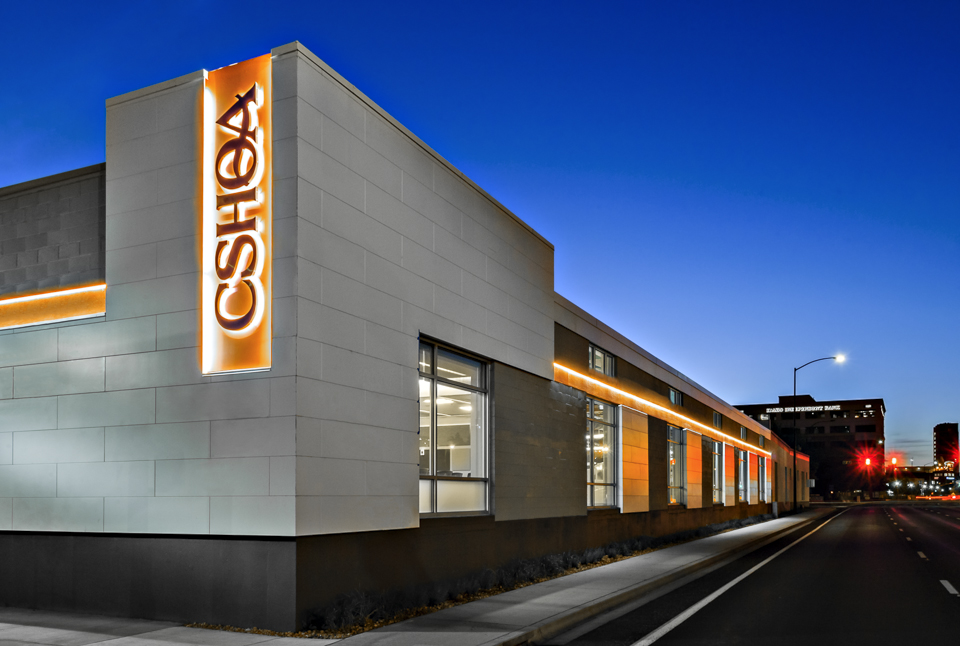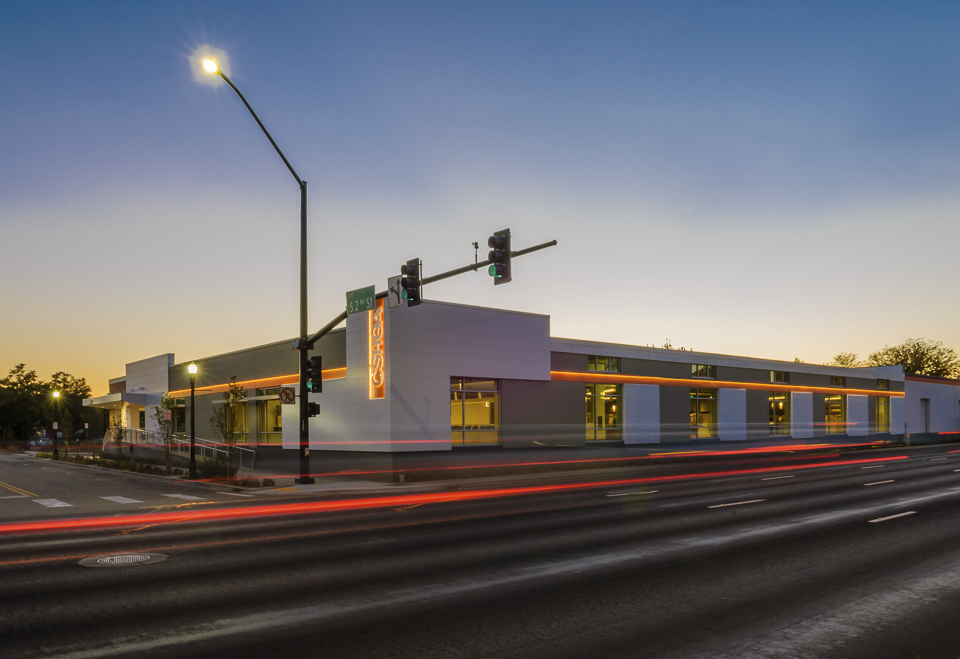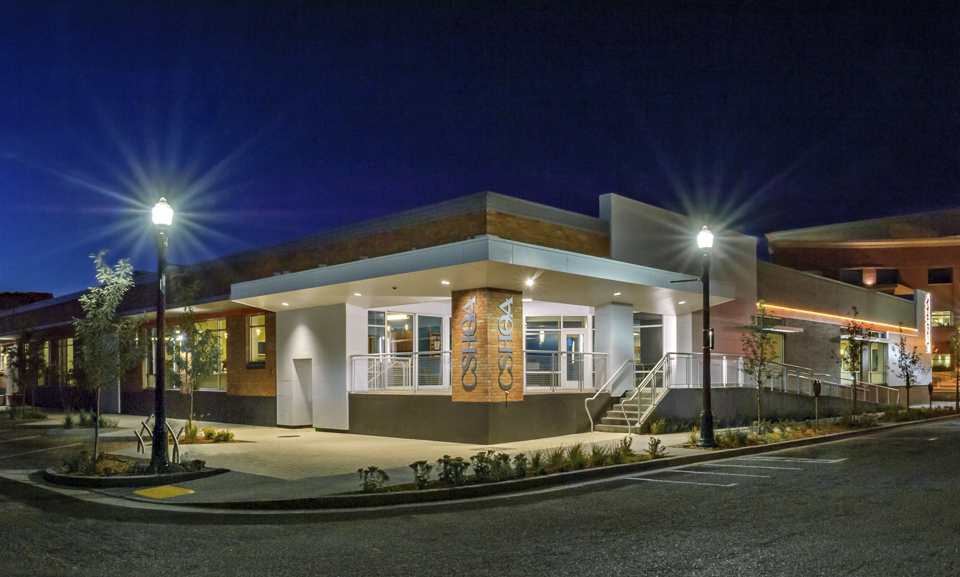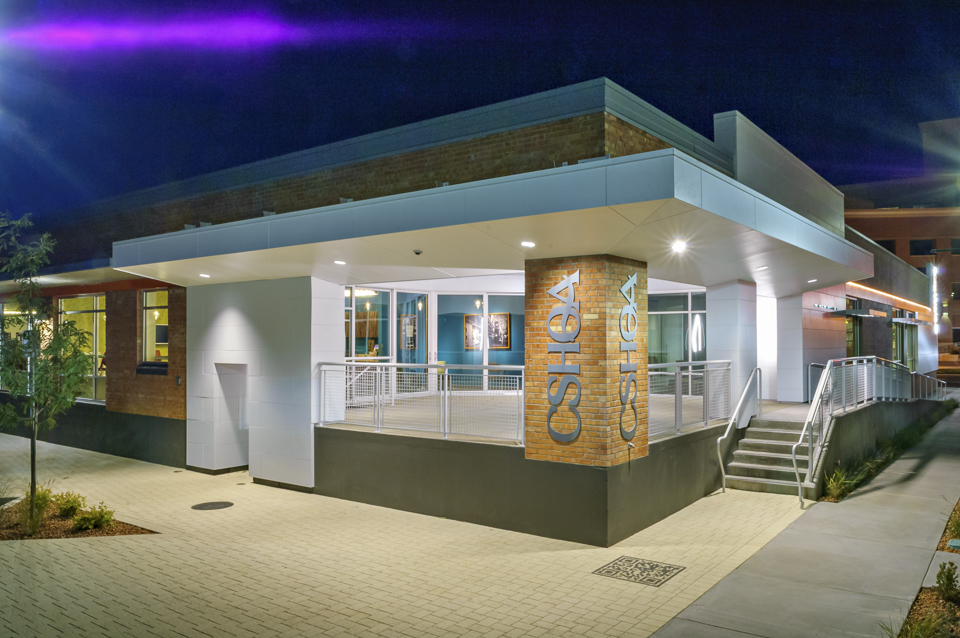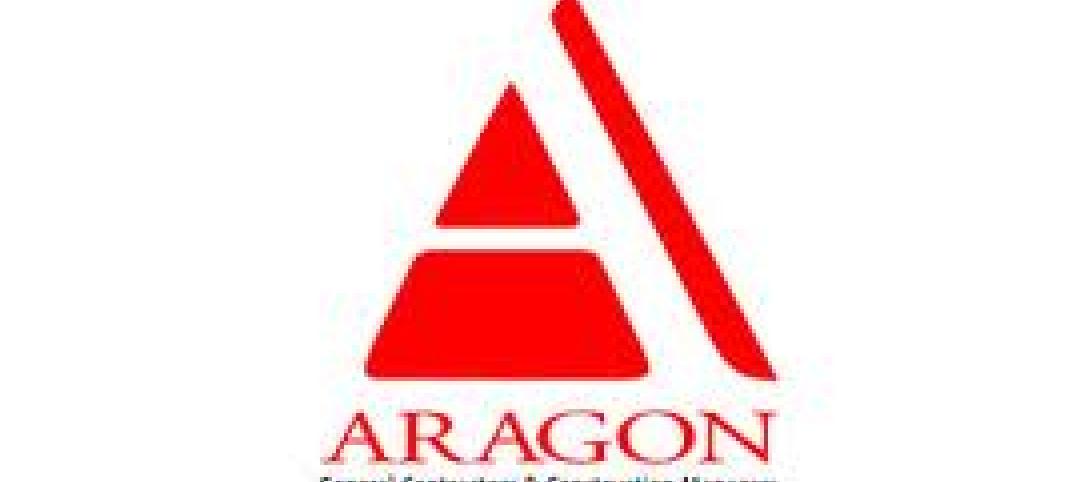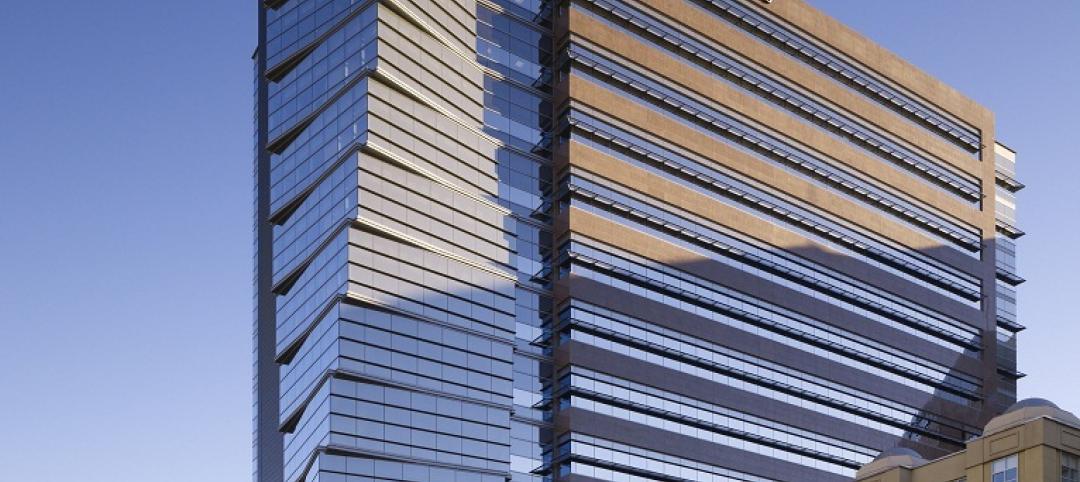When it came time for CSHQA, an award-winning, full-service architecture and engineering firm, to move office locations, they didn’t need to look far. The 20,000-square-foot warehouse was not only a mere three blocks away, its renovation would be an ideal demonstration piece to show existing and potential clients how a building can be updated without changing its historic nature and while respecting the surrounding area architecturally.
Built in 1959, the building was originally used as storage for the rail lines that once ran along Front Street adjacent to the building. The interior space, although smaller, occupies only one floor—unlike the three floors in their previous location—allowing for closer collaboration of employees. The interior design philosophy was to expose the original wood ceiling composed of 10x26 solid timber beams and joists, and and to add 14 new skylights to create uniform interior light levels and reduce energy use. The existing interior columns, 10” diameter concrete, were refurbished and many were left exposed. In keeping with the vintage feel, reclaimed timber was used for some of the interior woodwork as well as frames for artwork.
In addition, the design takes into account several building efficiencies, including the connection to the city’s geothermal system for radiant floor heating throughout the space. The same radiant system is used to cool the space in the summer. Other sustainability upgrades include extensive daylight harvesting with integrated automated lighting and dimming systems, the use of LED fixtures, sustainable landscaping and on-site storm water management, low-use water fixtures, covered bicycle storage, and preferred parking for fuel-efficient vehicles. The building is targeting LEED Platinum and Green Globes certifications. If achieved, the CSHQA office will be the first LEED Platinum office renovation in Idaho.
CHALLENGE
Find an exterior technology that understood the design and aesthetic goals while also contributing to the building’s LEED Platinum certification.SOLUTION
The Illumination Series Panels, in a custom cool white color, and Smooth NichiBoard to ensure a clean, flawless exterior look.RESULT
The Nichiha panels provided the client design flexibility to modernize the historic building and the first large-scale use of fiber cement panels in the area.
Like many urban areas, Boise is seeing quite a bit of transition in its downtown core. Amidst the tear-downs and new structures, this warehouse renovation was a chance for CSHQA to showcase something new out of something old. With that in mind, the team specified Nichiha’s Illumination Series panels and Smooth NichiBoard to ensure a clean, flawless look on the exterior. The building called for a specific color match, a cool white, to match the sheet metal coping at the top of the new walls.
Another selling point: a built-in ventilated rainscreen system, unique to Nichiha panels, that eliminates the threat of trapped moisture.
“One of the many goals of the building renovation was to explore different technologies and showcase them within and on the building,” says Ted Isbell, AIA, LEED AP BD+C, a senior associate at CSHQA. “We looked at several exterior wall cladding systems, including metal, wood, ACP panels, phenolic resin panels, and fiber cement. Nichiha worked with us to understand our goals.”
Nichiha panels on the CSHQA warehouse were the first large-scale use of fiber cement panels in the Boise area. The panels provided flexibility to work with different design decisions, while modernizing the historic building.
“It completely changed the look of the building,” said Mandie Brozo, project manager at CSHQA, noting that the clean look of the panels has attracted the attention of the real estate community. “Before the renovation, the building was anonymous, no one ever remembered it, and now people are noticing; it’s like a new building.”
For more information about Illumination and other Nichiha products, please visit: www.nichiha.com.
Architect: CSHQA
Location: Boise, Idaho
Project type: Historic remodel
Product: Illumination Series
Project features:
- Smooth, satin finish
- Virtually limitless color palette
- Easy installation
- Low maintenance
- 40% recycled content
Related Stories
| Mar 12, 2012
Improving the performance of existing commercial buildings: the chemistry of sustainable construction
Retrofitting our existing commercial buildings is one of the key steps to overcoming the economic and environmental challenges we face.
| Mar 7, 2012
Firestone iPad app offers touch technology
Free app provides a preview of Firestone’s Roots to Rooftop Building Envelope Solution with an overview of all the products from ground and stormwater management solutions, to complete wall panel and commercial roofing system applications.
| Mar 6, 2012
Gensler and Skender complete new corporate headquarters for JMC Steel in Chicago
Construction was completed by Skender in just 12 weeks.
| Mar 1, 2012
Reconstruction Awards: Reinvesting in a neighborhood’s future
The reconstruction of a near-century-old derelict public works facility in Minneapolis earns LEED Platinum—and the hearts and minds of the neighboring community.
| Mar 1, 2012
Aragon Construction completes 67,000-sf build-out in NYC
Aragon constructed the space in partnership with Milo Kleinberg Design Associates, (MKDA) and the Craven Corp. as the owner’s representative.
| Feb 27, 2012
Research Institute at Texas Children’s Hospital building receives LEED Gold
Innovative and sustainable design reflects best environmental building practices.
| Feb 22, 2012
Siemens earns LEED certification for Maryland office
The Beltsville facility, which also earned the ENERGY STAR Label for energy performance, implemented a range of energy efficiency, water conservation and sustainable operations measures as part of the certification process.
| Feb 22, 2012
Suffolk awarded Boston post office renovation project
Renovation of art deco landmark will add 21,000 square feet of retail and 110 new parking spaces.
| Feb 17, 2012
Tremco Inc. headquarters achieves LEED Gold certification
Changes were so extensive that the certification is for new construction and not for renovation; officially, the building is LEED-NC.
| Feb 15, 2012
Code allowance offers retailers and commercial building owners increased energy savings and reduced construction costs
Specifying air curtains as energy-saving, cost-cutting alternatives to vestibules in 3,000-square-foot buildings and larger has been a recent trend among consulting engineers and architects.


